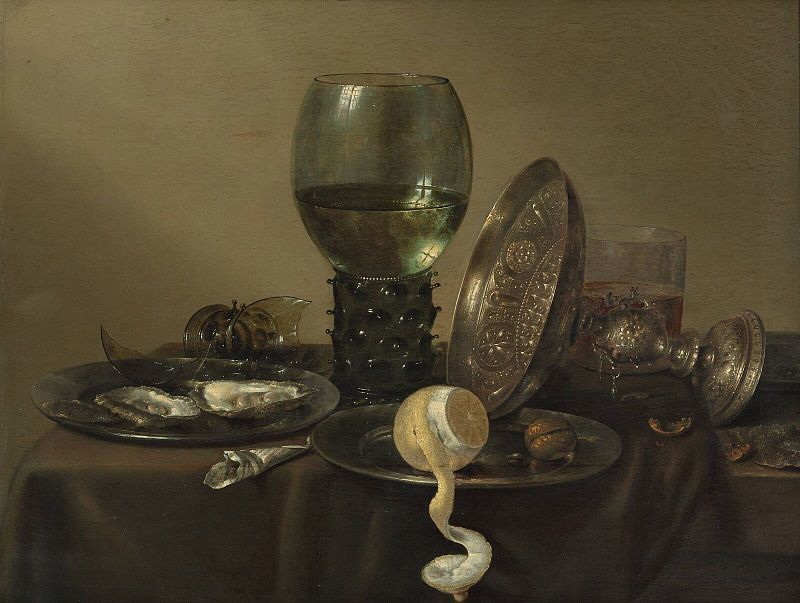It is 2015, and many of us celebrated the transition into another calendar year. Some hosted gatherings, and once the last guest said goodbye, were left with what was left: bowls holding crumbs, stained napkins, clusters of glasses. Even if New Year’s Eve was not a social event, or was solitary, perhaps we left dishes on counters and cups in sinks before slipping into bed to dream the year in reverse. The house seemed still when I fell asleep on New Year’s Eve. I expected to find things as I had left them, and I did.
Still life paintings, like the one above, upend my sense of chronology. I imagine these images represent eternally fixed scenes instead of waypoints along processes. The still life might be a deliberate arrangement (prepared for painting) that evokes unrealized or pretend activity (the liveliness of having socialized, the necessity of eating), and in so doing, displays accumulations (of things and the once-living; of stuff and symbols). I forget, when looking, that these arrangements are not eternal. They can be taken down, their parts put to use or put away. Foods will begin to decay, and the scene’s seeming stasis, its petrified spontaneity, can be interrupted.
THE SOUND OF A RAT
Scampering over saucers —
The sound of a rat.
Cold, cold.
This haiku by Buson (translated into English by Geoffrey Bownas and Anthony Thwaite) presents an interruption. When I imagine this rat moving through a still life or in a cupboard, I see her or his body flash past. But the poem (or this translation of the poem) foregrounds the “sound” “a rat” makes “scampering over saucers.” The rat moves quickly and quietly, and “the sound of a rat” is probably the sound of clinking saucers.
Rats are often considered filthy, destructive, and multiplying, but some people also keep domesticated rats as pets. Associations proliferate and bump into one another. Because rats are usually viewed as “uninvited guests” and invading pests, the rattling saucers could signal a phantom presence, felt and heard but not seen. The repetition of “cold” might highlight both a visceral response to the rat (“cold” x 2 = very cold: chilly or eerie), and the assumption that there is always more than one of them.
Buson’s poem brings to mind creatures with whom I’ve crossed paths at home: grackles busy in flower pots, centipedes circling drains, mice slipping down curtains. This New Year, like others, may feel like a fixed point for days or even weeks. But perhaps the world and its worlds are never completely still. As we move into the New Year, it moves into us. It, too, is moving.
Painting: “Still Life With Oysters, a Rummer, a Lemon and a Silver Bowl” by Willem Claesz Heda, 1634. For more information about still life paintings like this one, have a look here.
Poem: “The Sound of a Rat” appears in Holland, John, ed., Animal Poems. New York: Everyman’s Library, 1994.

